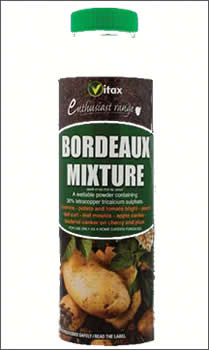Needlecast
Lophodermium Pinastri
Cyclaneusma
Lophodermium Pinastri
Cyclaneusma
Needlecast (or needle cast) disease is a fungal disease that attacks a variety of evergreen trees including spruce and pine trees. When a tree is infected, it will begin to show small brown or black spots on new needle growth. The following spring the spots appear more pronounced and the needles turn yellow, brown and then drop mid-season.
Lophodermium (needlecast) on pine. Needle cast diseases are caused by various fungi that infect the needles on pines and spruce.
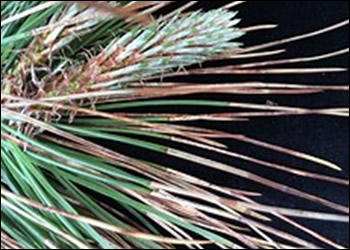
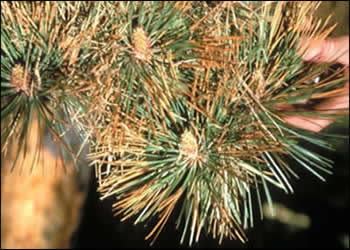
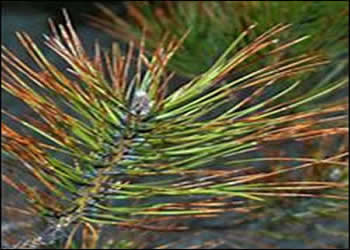


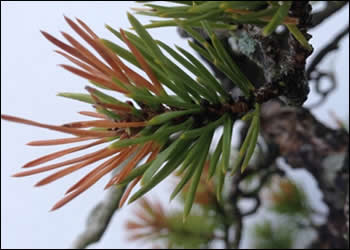
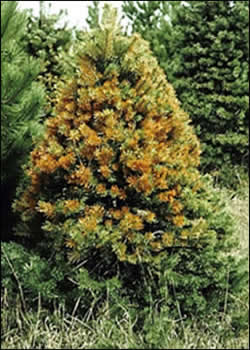
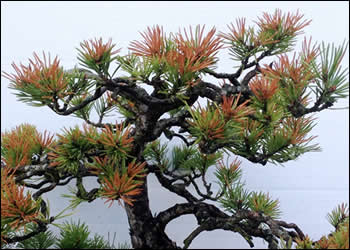
Cyclaneusma (needle cast) is a fungal disease that is a part of the phylum, Ascomycota. It infects following infection by Cyclaneusma; most pines do not display symptoms until 10 months after the initial infection. Symptoms include needles developing yellow spots, horizontal brown bands around the needles, swelling of needles and off-white fruiting bodies formed on infected needles.
Controlling Cyclaneusma has presented a challenge as the disease can survive on both living and dead needles during the winter months. Effective management methods include placing pines in non-shaded, well drainable soil as well as spraying fungicide. Cyclaneusma presents somewhat of a challenge to manage, as infected needles remain part of the tree throughout the winter and spring months. The creation of spores as well as infection can occur in freezing temperatures with wet needles.
The yellowing of needles that occurs in early September actually leads to premature – or the first detection of – needle-cast; this causes a stunted growth. The most infected needles are prematurely shed by December. The infected needles are in the interior of the tree; the newer needles, on the outer surface of the pines, are green and resistant to the disease. However, the premature shedding of needles in the interior can extend outwards leading to a loss in growth and ultimate death.
Needle cast diseases are difficult to diagnose simply because their symptoms are similar to low pH, poor nutrition, fertilizer or chemical burn and even root rots. Correct diagnosis requires microscopic examination of the size and shape of the fungal producing ascospores. These fungal spores are produced quite infrequently; after the disease infects needles, it will not produce symptoms or additional spores until the following year. In addition, Cyclaneusma may not be the only fungus present on the diseased needles. Saprophytic fungi live on dead tissue and may therefore continue to worsen the infection on needles after they have fallen.
Cyclaneusma presents a challenge to manage as infected needles remain part of the tree throughout the winter and spring months. The creation of spores as well as infection can occur in freezing temperatures with wet needles. Needles may not develop symptoms for up to a year from the infection date, proving difficult for the effectiveness of pesticides applied in the first season to be judged. Infected needles on or under the tree retain the ability to release spores any time during the growing season, so they should be removed as soon as possible.
Recommended Steps to Control Needle Cast on BonsaiExtremely difficult to control once established – prevention is a far better option
- To reduce the chances of a tree contracting needle cast it is important to promote strong healthy vigorous growth by properly watering and fertilizing the tree.
- When pruning evergreen trees, avoid pruning when the trees are damp or wet and be sure to sanitize the pruning tools after each branch, thus preventing spread from branch to branch or tree to tree.
- Ensure that when removing needles on infected trees you use the needle plucking method and not cutting as is now recommended by many. It is good for budding but in the case of needle cast you must remove the needle sheath containing the dormant buds as these also contain the fungal spores – remove and burn!
- To control needle cast on a tree that is already infected, prune severely infected branches. Spray the tree with fungicide in the early spring. Repeat the spray every 14 to 21 days as necessary. Needle cast diseases can be effectively controlled with fungicides containing chlorothalonil. A copper fungicide spray is one method that can be applied to prevent needle cast.
THIS IS BY FAR THE WORST FUNGUS FOUND ON PINES
Needles discoloured often show diffuse brown or black lines, ultimately drop off and if the tree is not treated, it will die. Lophodermium is a genus of fungi within the family Rhytismataceae.
The apothecia of Lophodermium are only clearly recognisable when they are approaching maturity or when they have discharged their spores.
Under moist conditions, the minute ascospores are actively discharged a short distance into the air. The spores are carried by the slightest air movement for 50 - 100 yards and will settle on any nearby pines and can result in their death. Severe infections are usually associated with cool wet summers, or mild autumn and winter conditions.
Prevention rather than control should be the term used, as it is almost impossible to eradicate once established. Regular use of good a fungicide is essential and ensure that the trees are in well ventilated areas; warm, damp, still conditions would allow spores to settle and multiply.
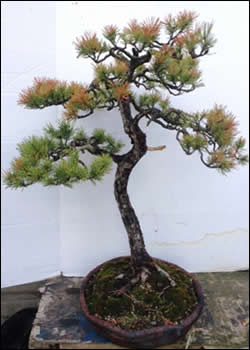
Pine needle cast on a Scots Pine. Probably was spread on the wind from a large Scots overhanging the garden. Later the large pine was cut down when proven that it had needlecast.
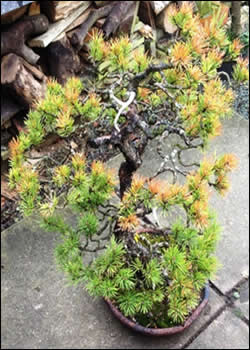
The old needles had turned brown with the banding that indicates needlecast. The tree is still strong as can be seen by the new candles emerging. The regular treatment was Murphys Copper Based Fungicide which prevented the cast spreading to new needles and with a prolonged period of treatment eventually eradicated the cast, it can take years and you must isolate the tree throughout all that time. It would need to be a very special or very valuable tree to spend all that time and put your other pines and spruces at risk. I would recommend burning it and getting rid of the compost it was in - it is that infectious. As Murphys is no longer available due to E.U. and government regulations, try Vitax Bordeaux (Copper) Mixture.
Also, remove all infected needles and burn them. The compost heap is not an answer; you will just release the spores into the air to land on another tree. Remove any needles lying on the soil surface and also remove at least the top layer of soil. Keep the tree on the dry side and only water the soil when obviously dry; avoid if possible, watering the foliage. After several seasons, hopefully things should start to return to normal.
